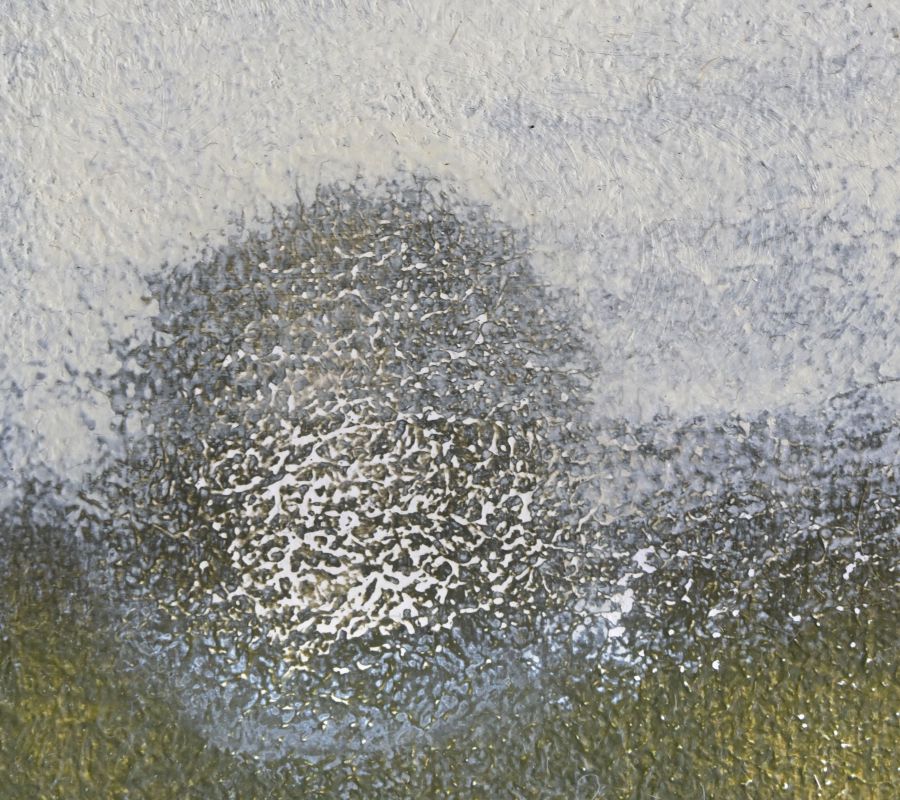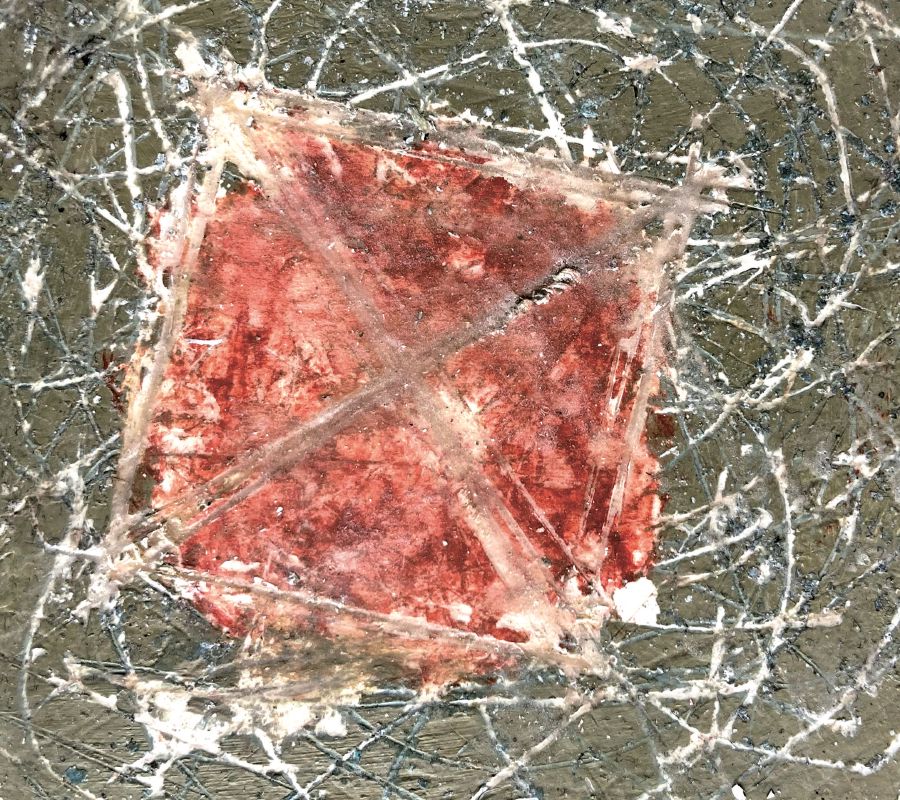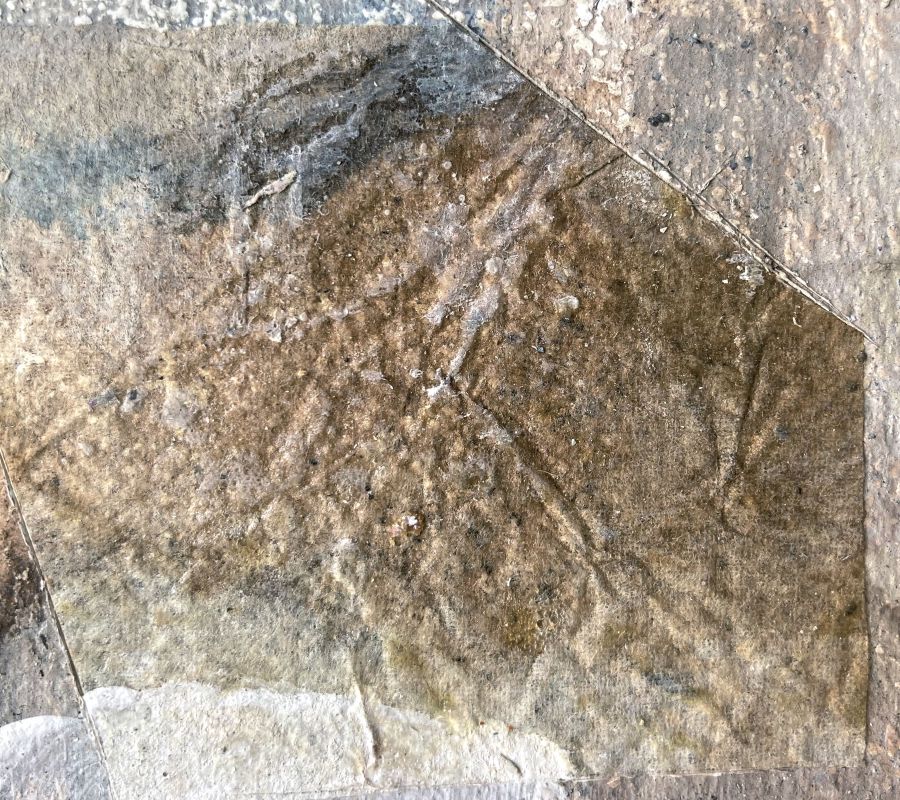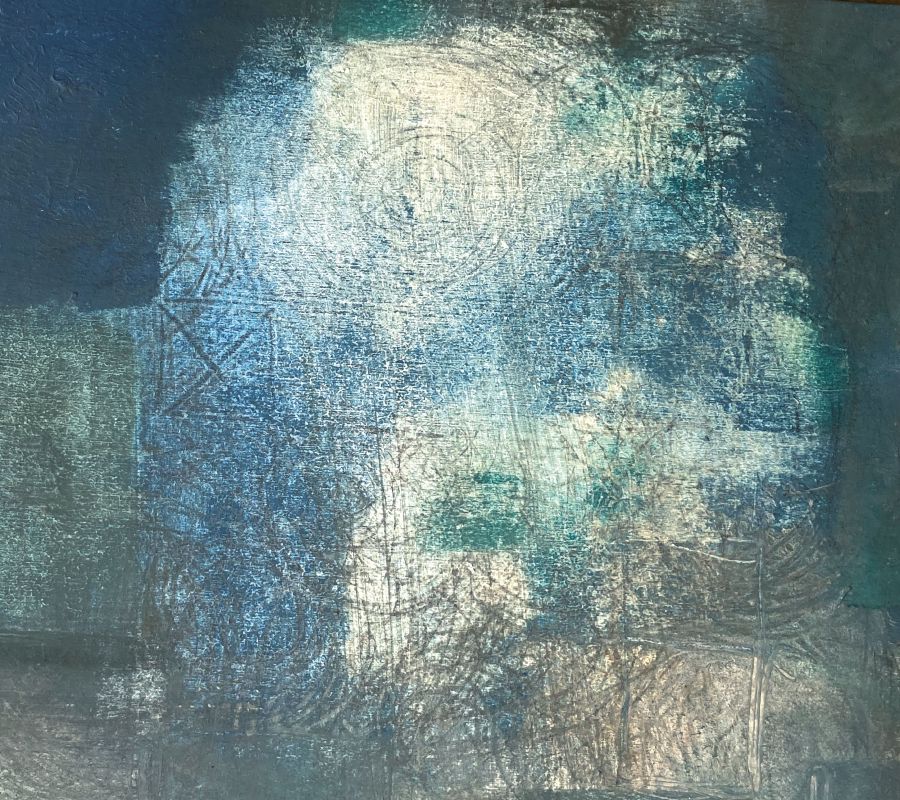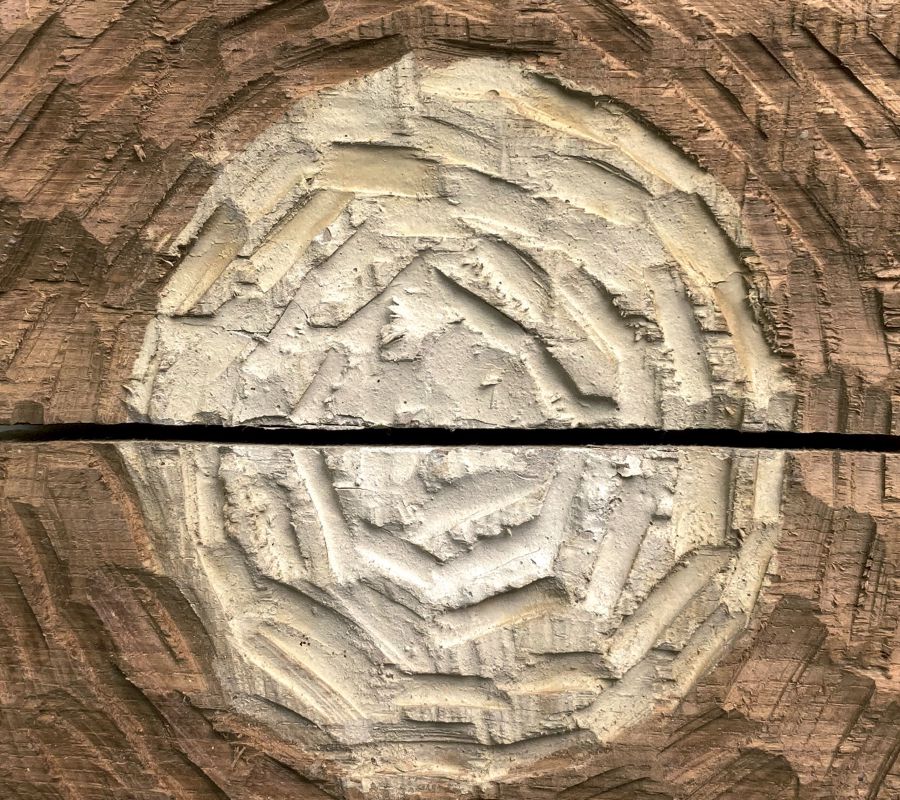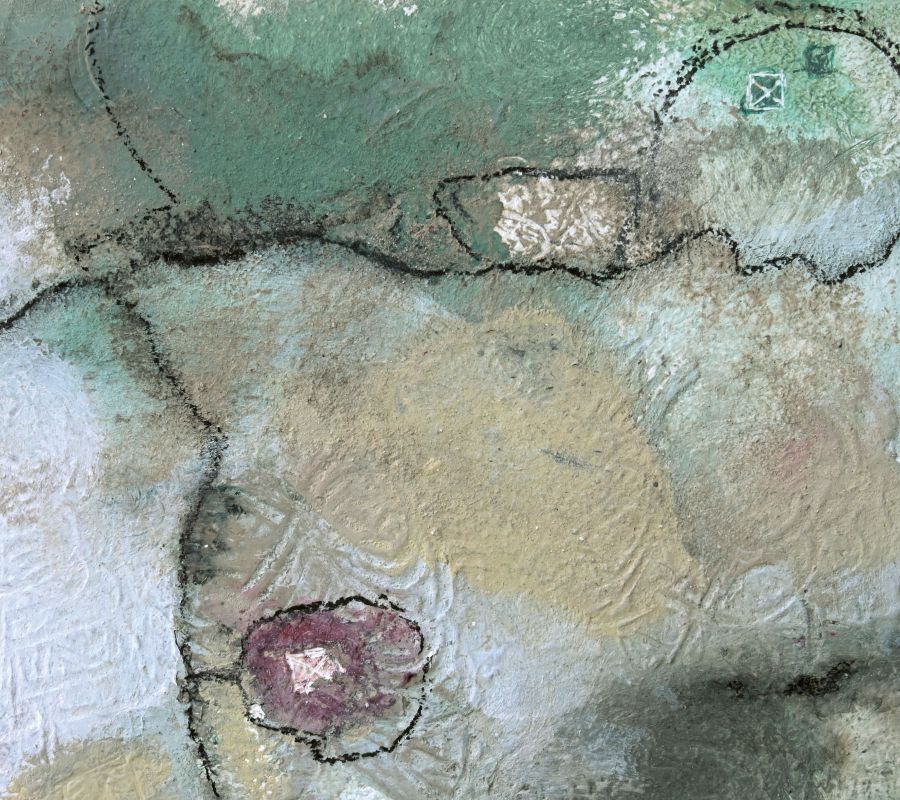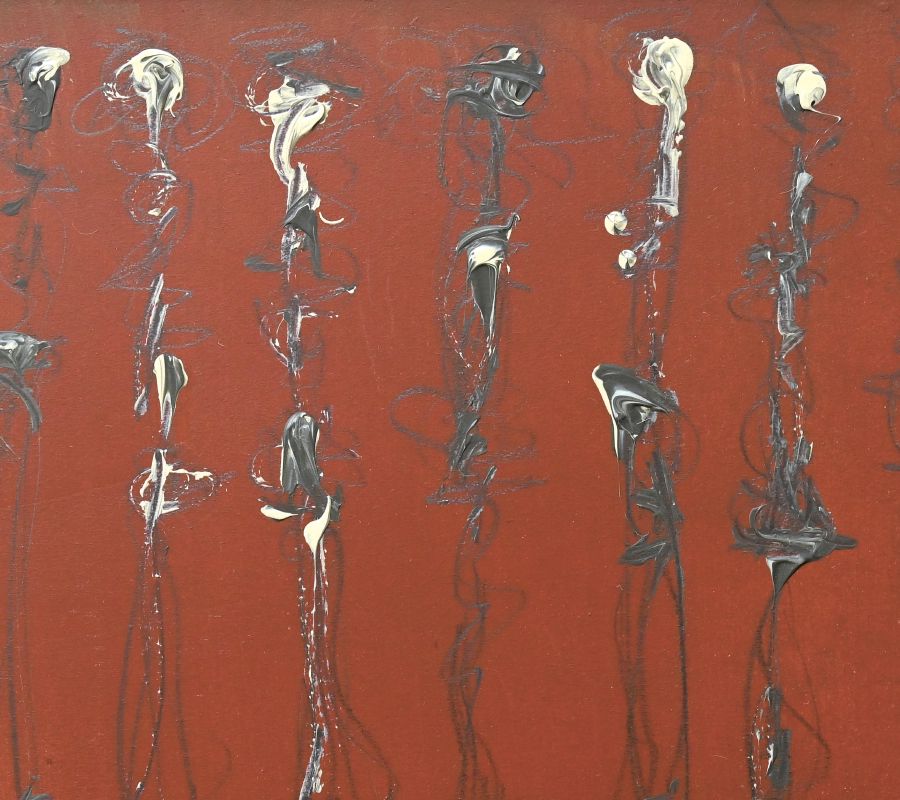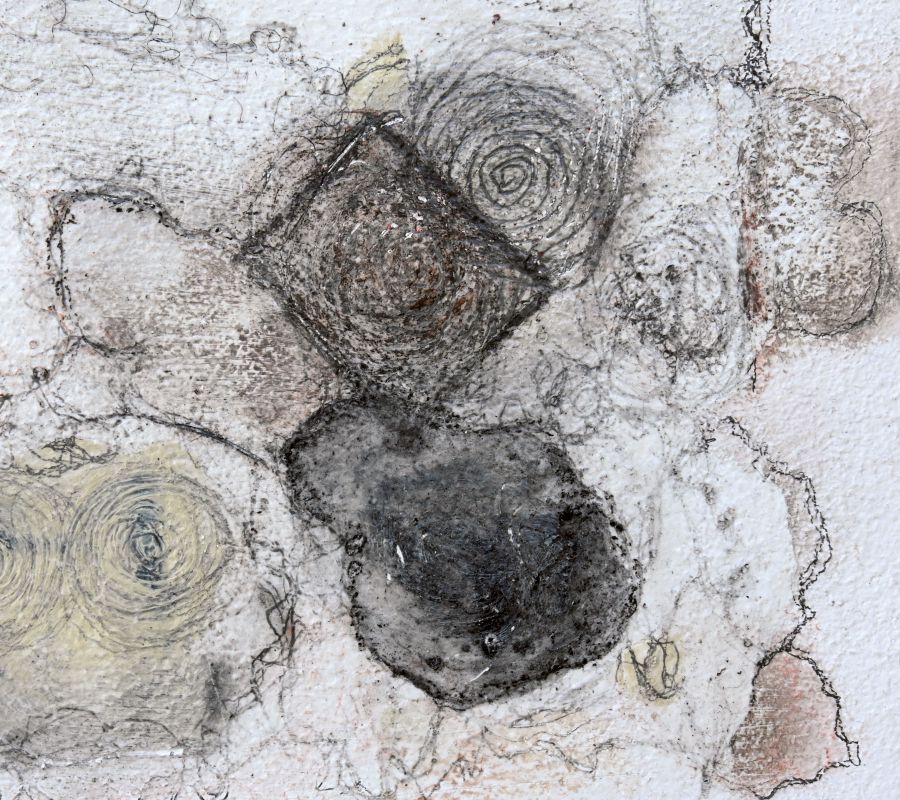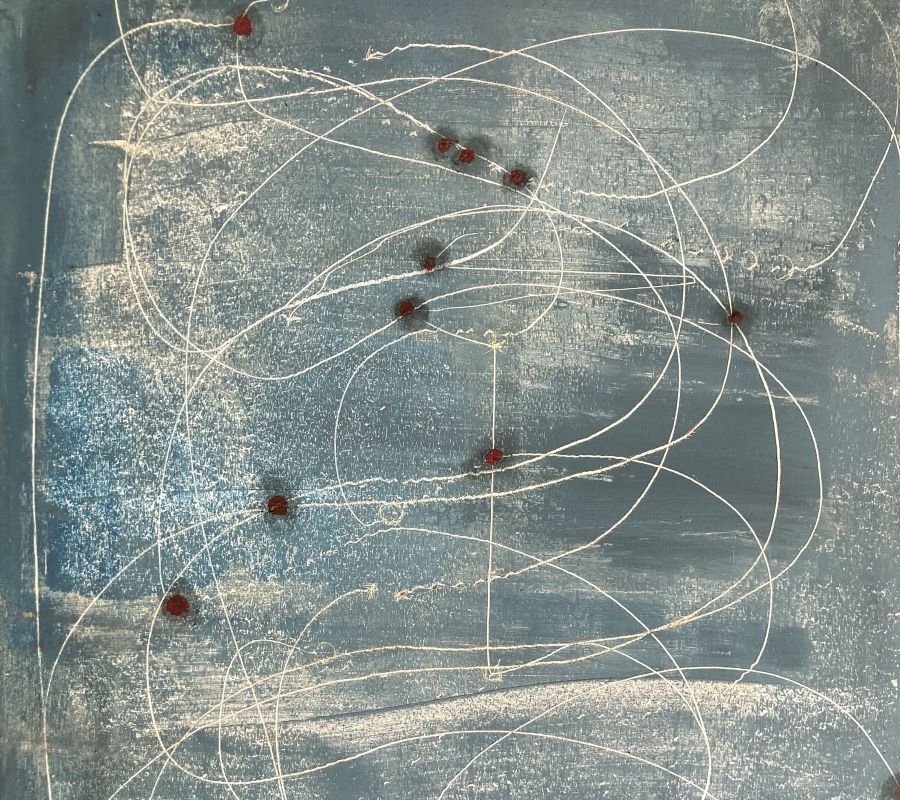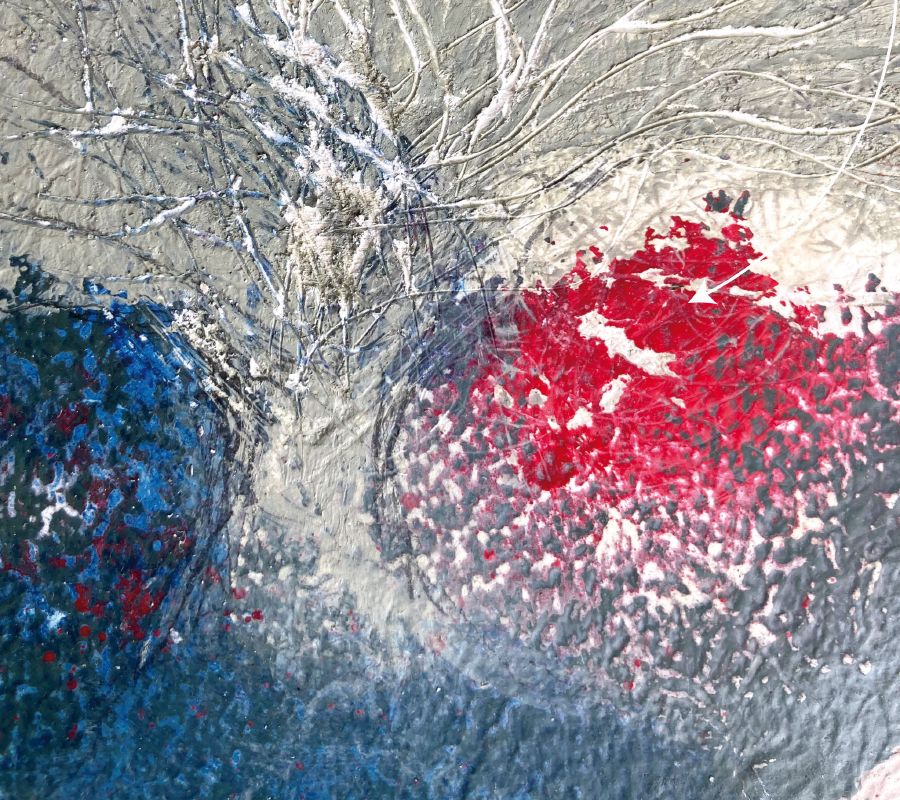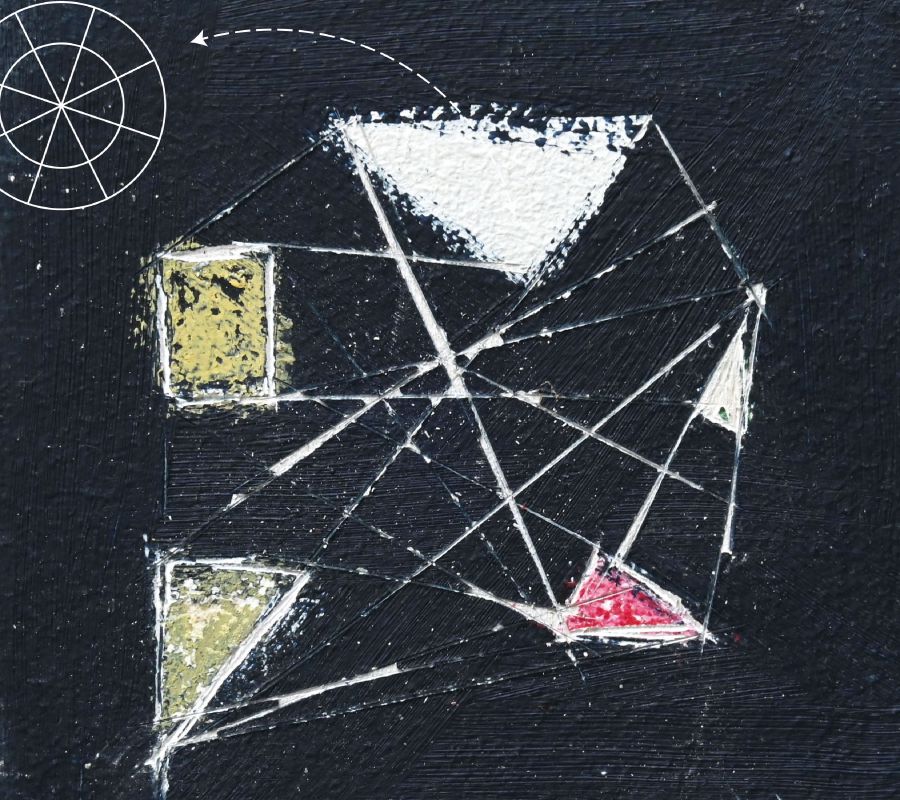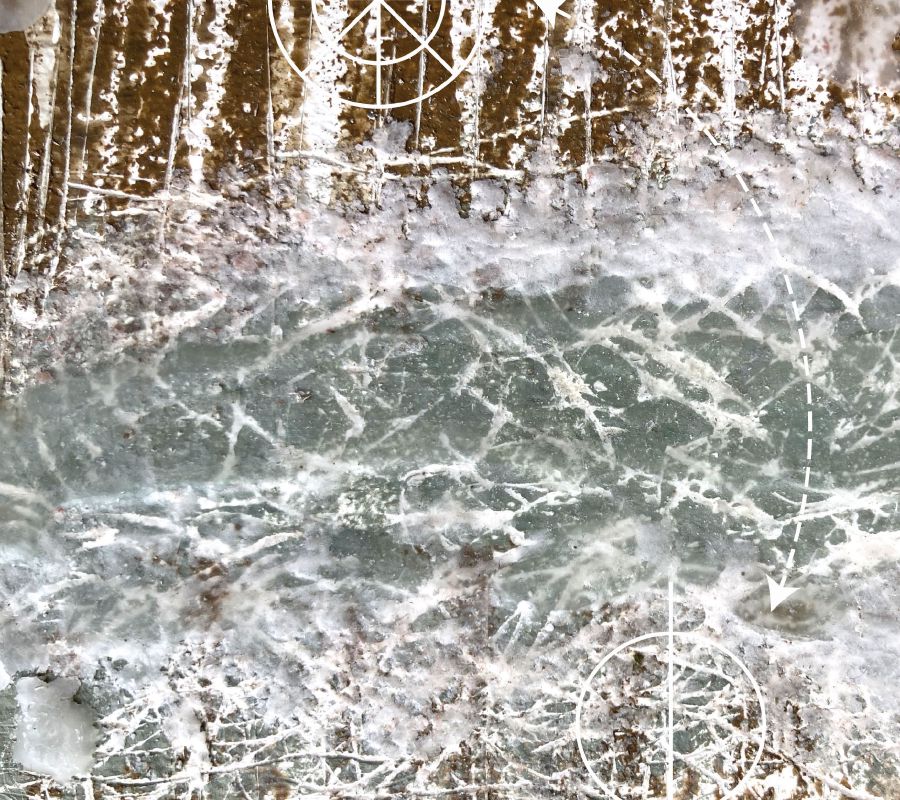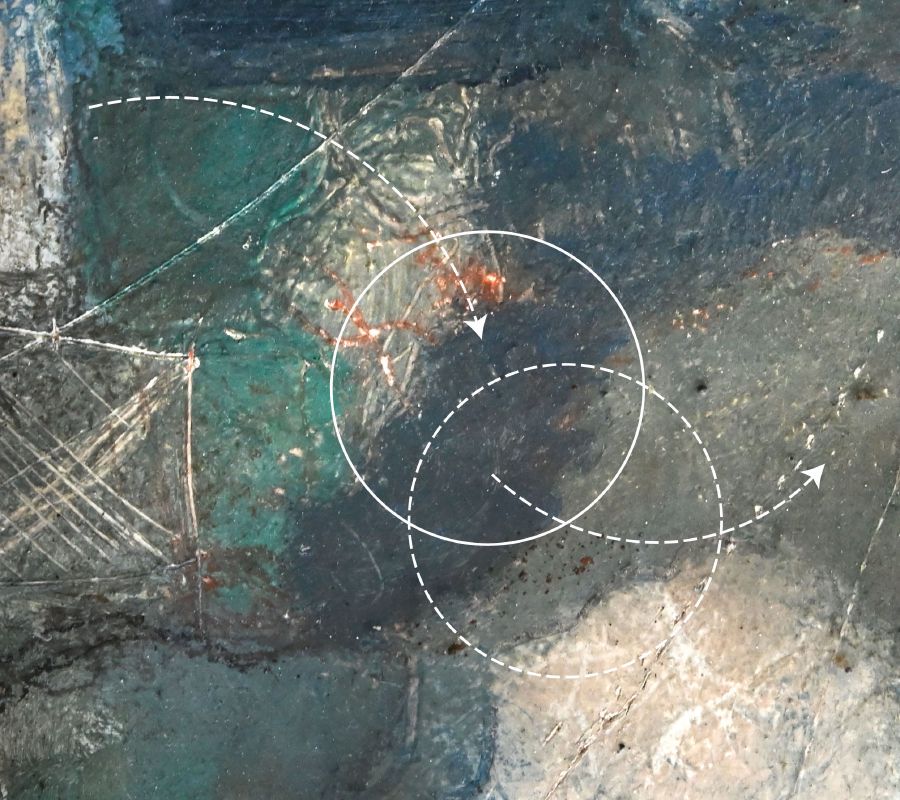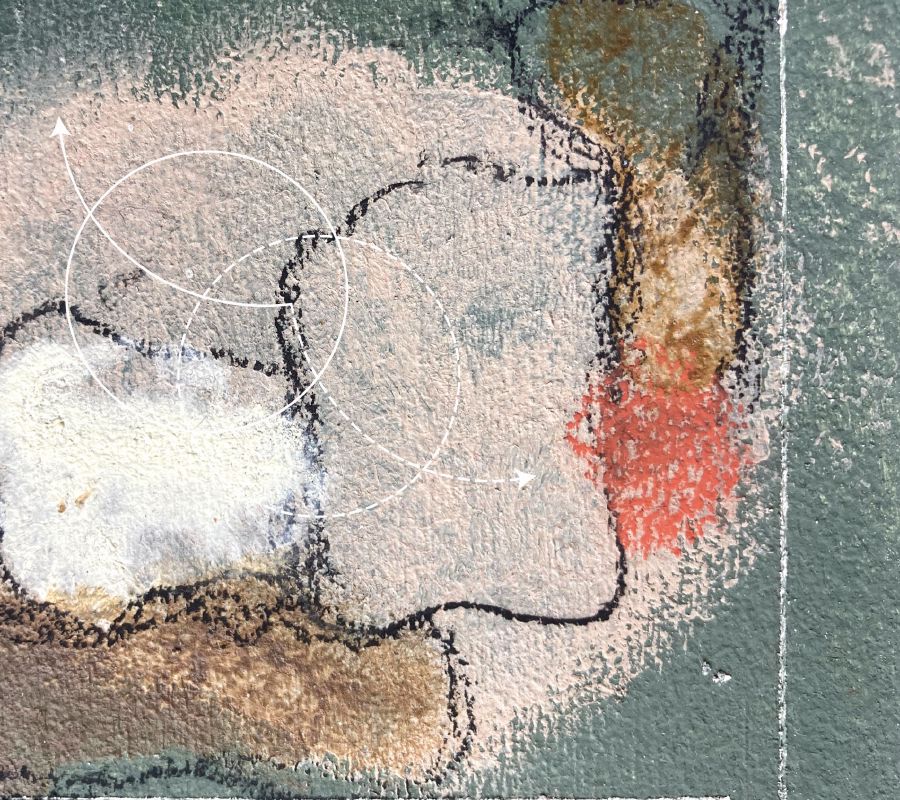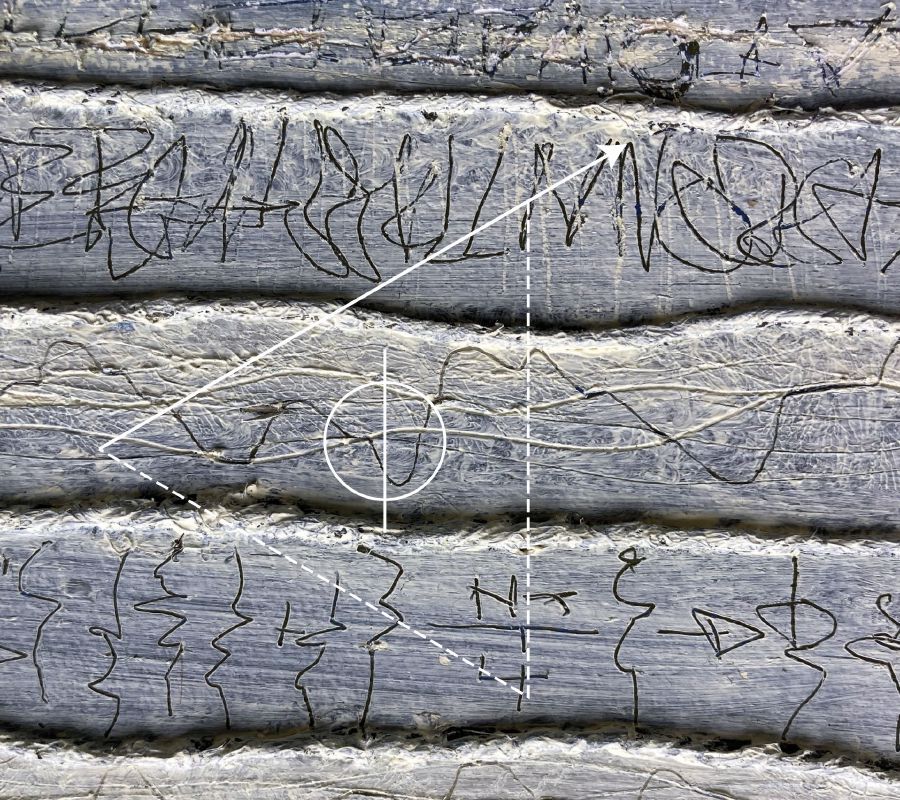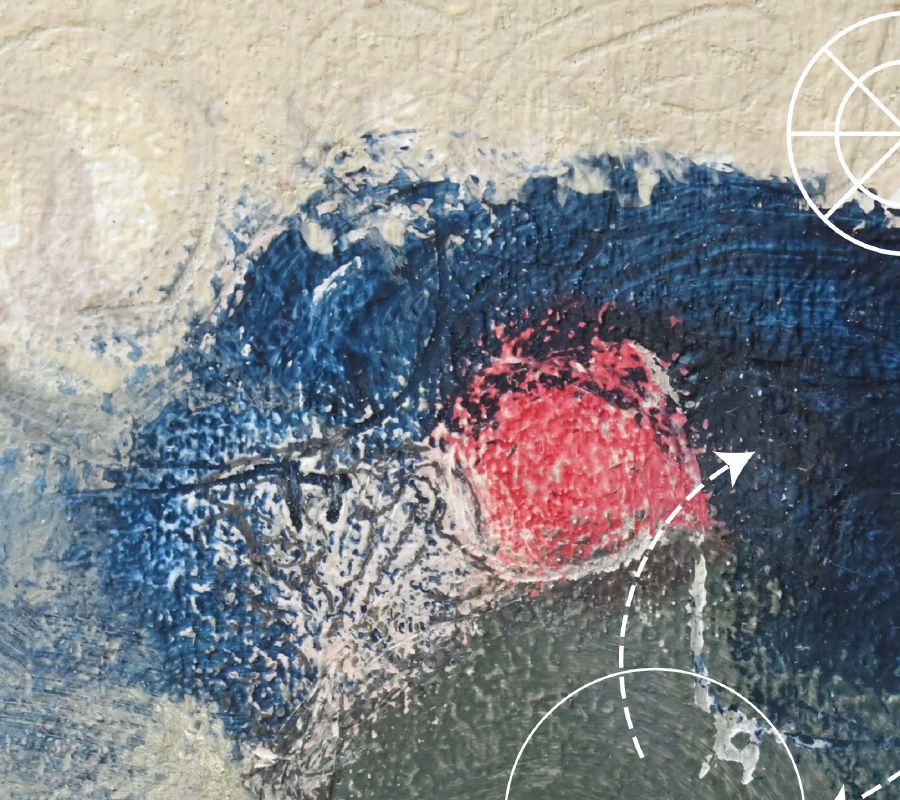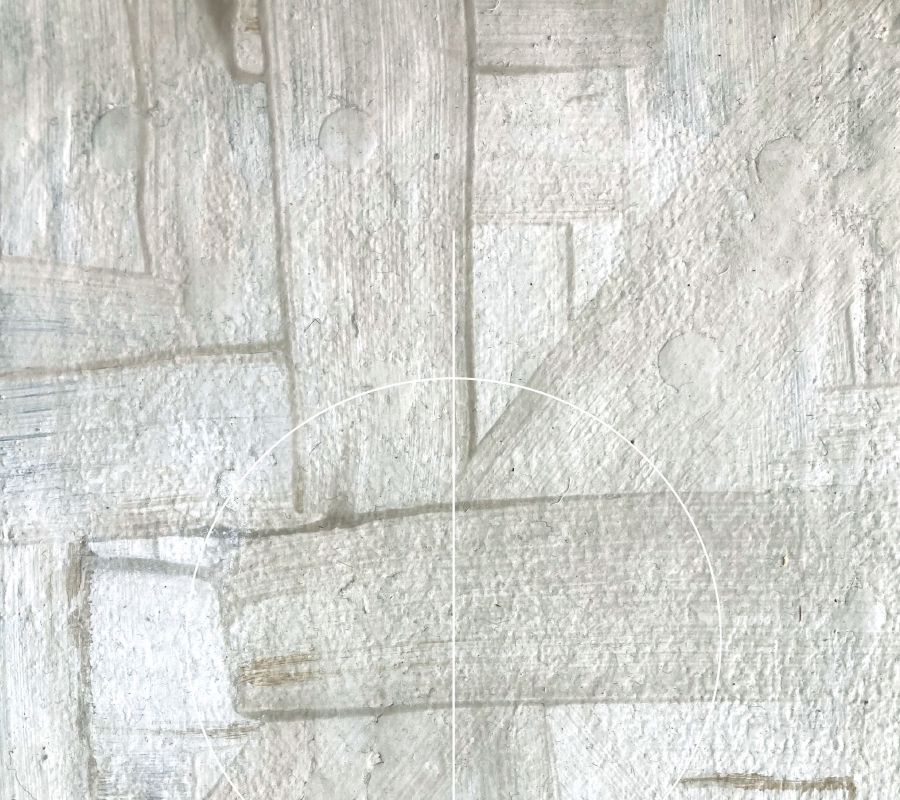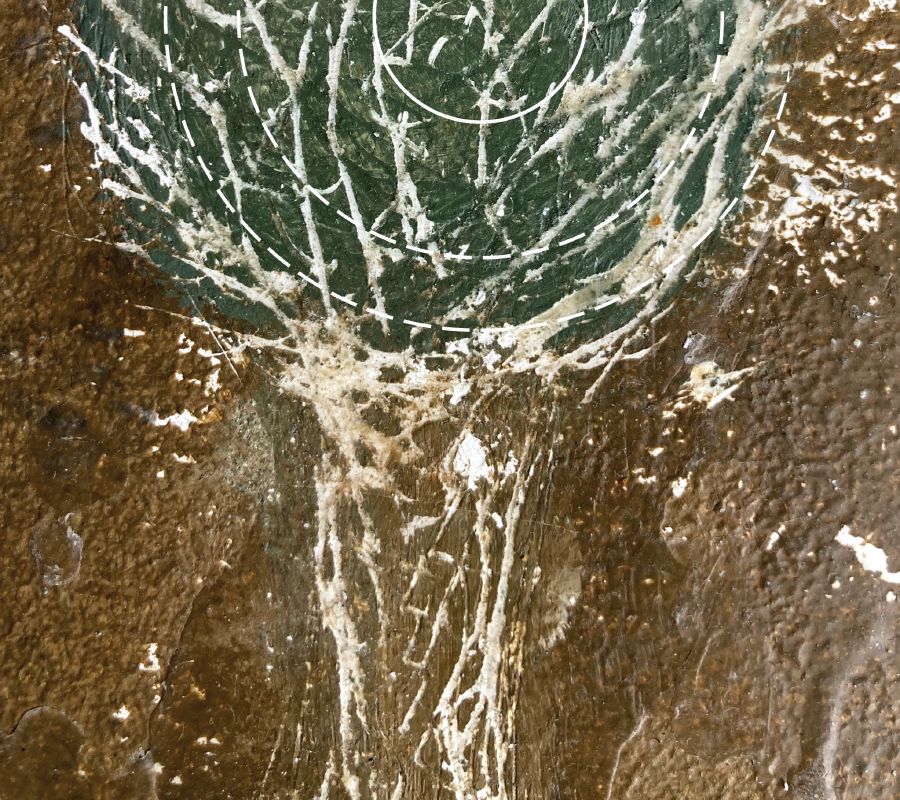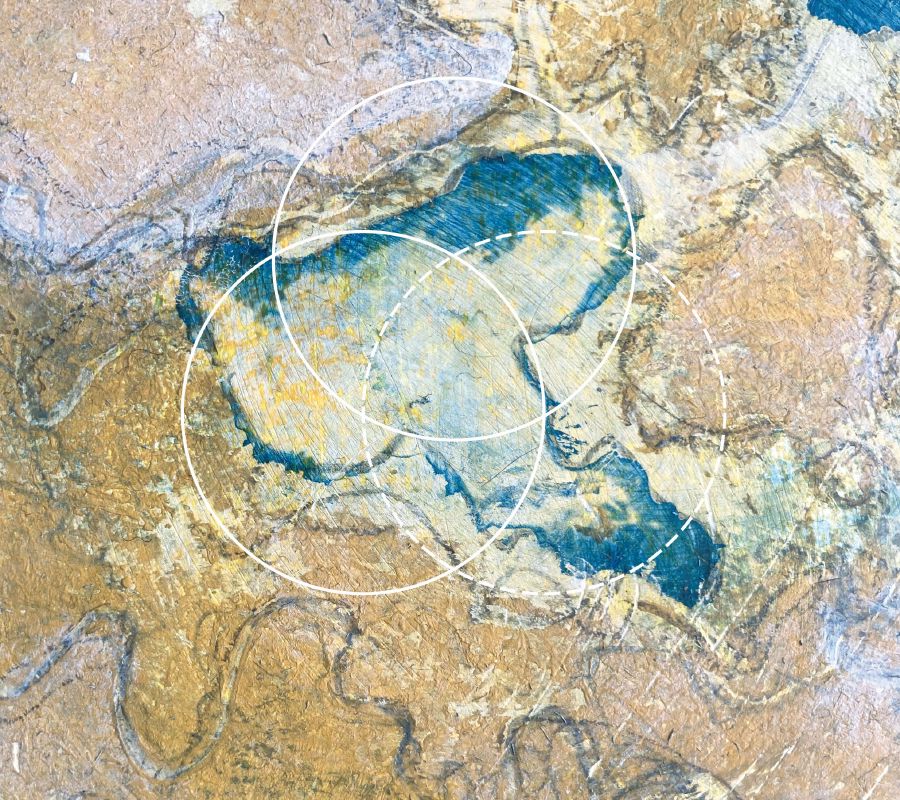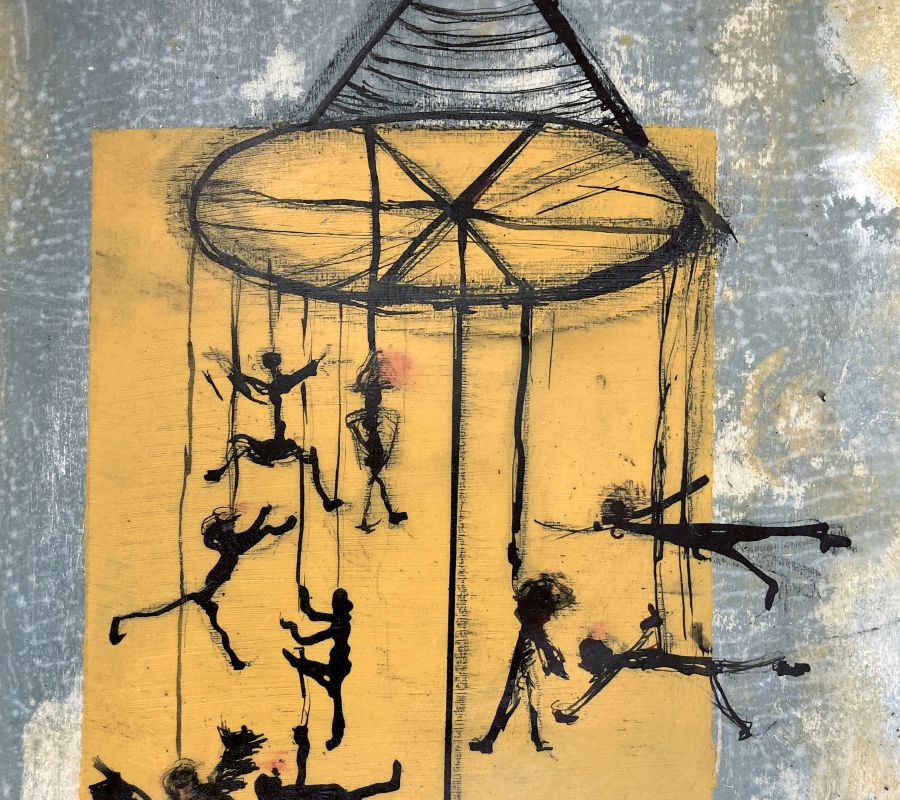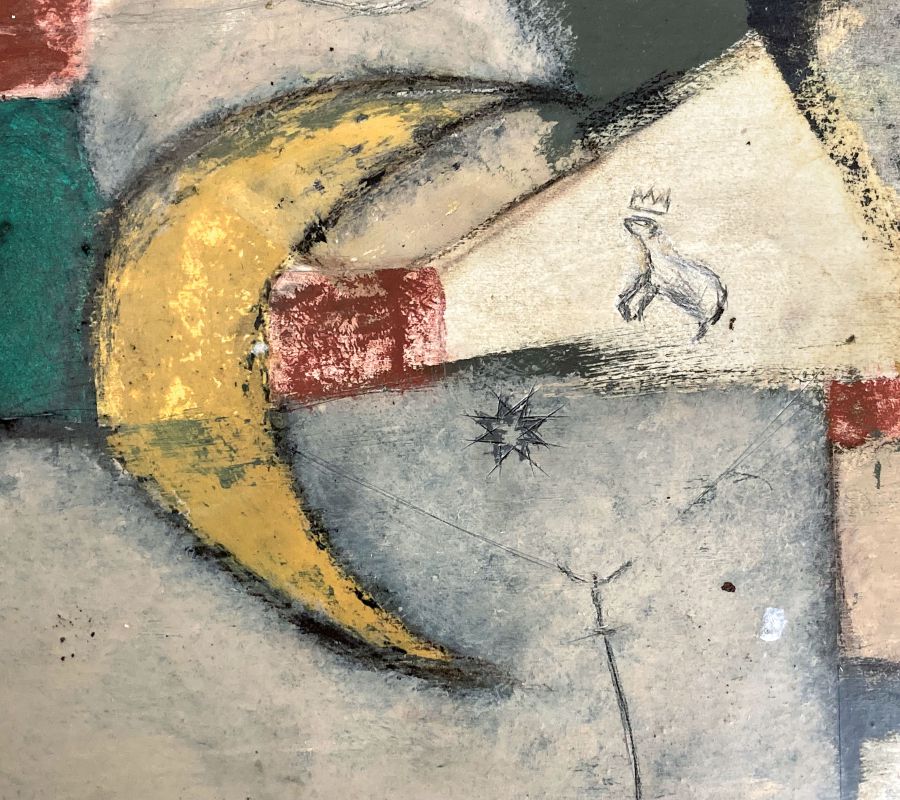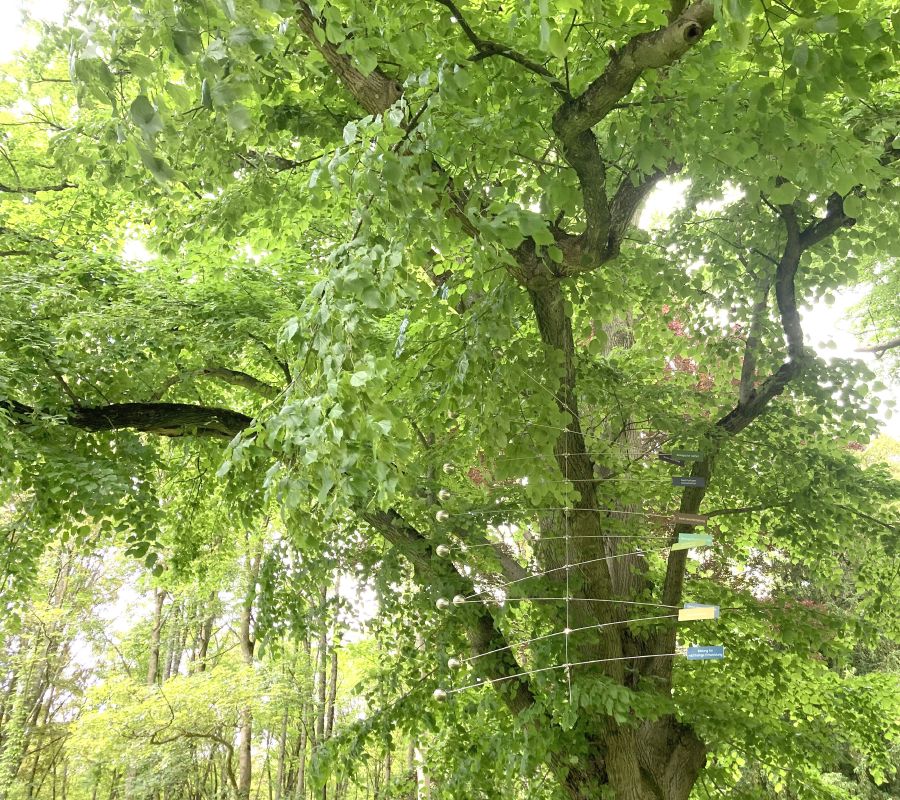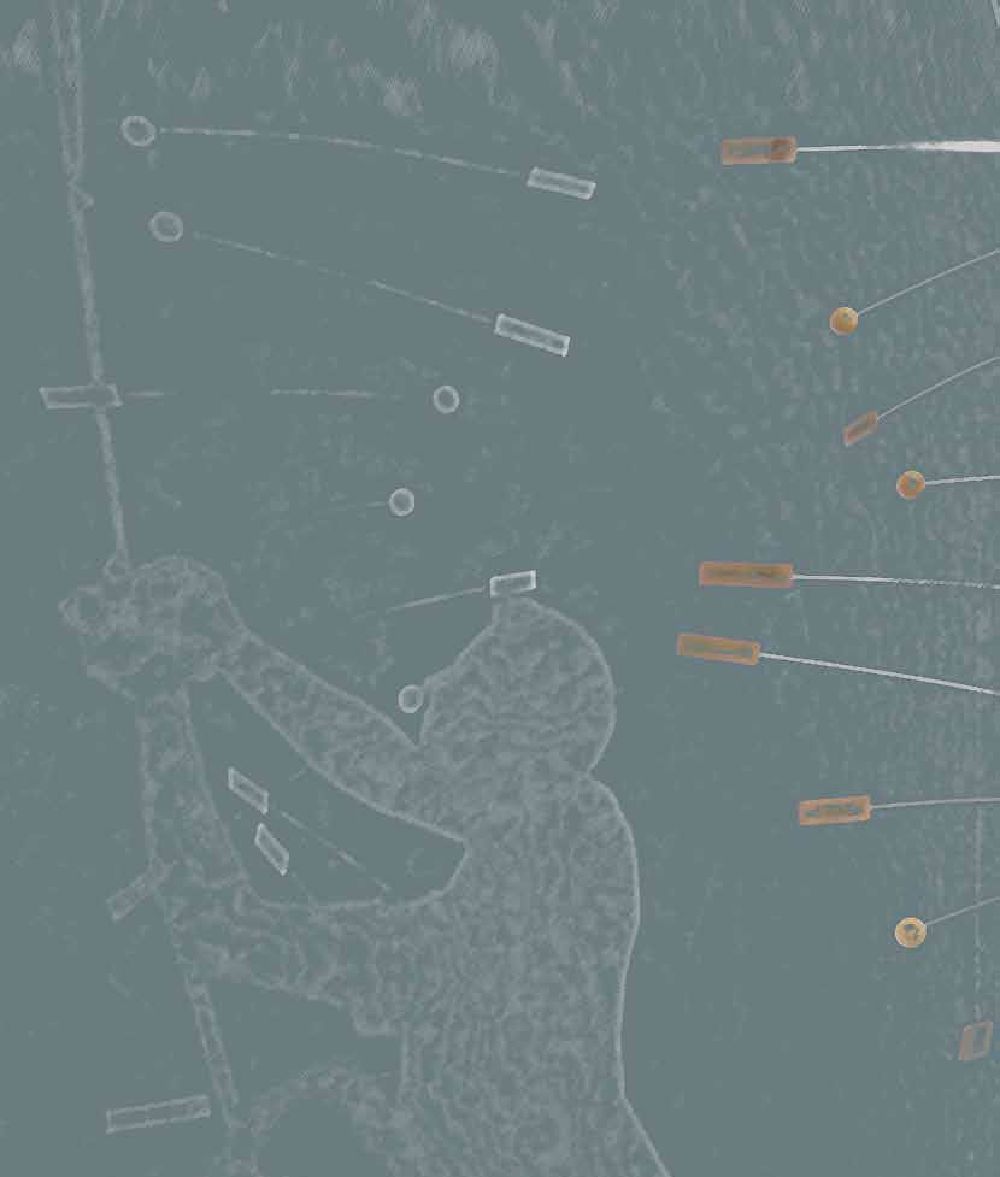
about
Art of living
Being human on this planet
The earth as a habitat for humanity is under threat. Humans in particular are in the process of destabilizing the ecological balance of a system that is vital to their survival and devaluing the ethical foundations that are necessary for the survival of society, thereby contributing to the destabilization of the system as a whole. In today's affluent states, being human on this planet largely seems to mean performance, consumption and self-optimization.
The corporate culture is almost exclusively concerned with growth and efficiency, which predominantly serve the goal of profitability. In just two generations, man has become the greatest force of nature, shaping nature in an unprecedented way. [We are living in the age of the Anthropocene, a geochronological epoch so named because man has become one of the most important factors influencing biological, geological and atmospheric processes on earth]. The driving force behind overexploitation is greed, which drives people into burnout despite oversupply. The mantra of unlimited growth has long since taken root in our minds. Humanity currently consumes around 74 percent more resources every year than the earth can regenerate and thus sustainably provide within this period. In this context, the Living Planet Index has recorded a 68 percent decline in biodiversity in recent decades. On average, the number of mammals, birds, reptiles, amphibians and fish studied has more than halved. At the same time, the ethical foundations of a cross-ethnic responsibility for an ecologically sustainable future for the earth and the next generations are becoming less important, thus preventing peaceful coexistence in the present. Millions of people around the world are on the run for fear of war or because they have no prospect of a meaningful life in their home country. A senseless war is currently raging on Europe's borders in Ukraine.
End-time mood?
Hopefully not! Perhaps it is not yet too late to avoid a gradual collapse of the earth due to the overexploitation of the planet's human and natural resources. Although this scenario obviously wants to force us in a different direction, there is a spark of hope from "germ cells" that work together in a network to think ahead and, by virtue of their soulfulness for the "good life", are able to inspire and transform others. To do this, we need to believe in the global we and, above all, a sense of what people feel when they develop compassion.
It will depend on what standards we set for being human in the future. In order to define a global ethical foundation, it will be necessary to create new spaces for communication and thought in which the basic pillars of ethical and responsible action are balanced and defined. A central task in shaping the foundations of these "pillars" will be to regain a collective spirituality that does not ignore a spiritual dimension, but places it at the center of the maturing process. There is no dimension of meaning that could provide more scope for an ecological and ethically sustainable consciousness. Hermann Hesse described this dimension of meaning in spirituality as the "unity behind the opposites". Without it, it will hardly be possible to open the door to a sustainable interplay between "man and biosphere". In the current economic systems and cycles, this attitude leads to the so-called "economy for the common good", which generates as much benefit as possible - in every respect and for as many people as possible - and builds on this. Based on an ethical, socio-ecological set of values, it is seen as the future-oriented lever for change at an economic, political, social and ecological level.
Strategy in the making
Using the UNESCO Bliesgau Biosphere Reserve as an example, a model and experimental field is presented below that has been tested for over ten years as a "finding instrument" in coexistence with the traditional development strategies in this habitat in smaller contexts.
The conceptual-artistic project began in 2011, and its continuous sharpening and development repeatedly raises the question of the element that dissolves rigid, change-resistant systems. Despite all reservations, previous experiences made with the methodology within groups, but also by individuals, indicate that changes are emerging through the exercise with the Finde- Instrument Mobile - UNESCO Biosphere Reserve Bliesgau. It was definitely possible to activate the awareness and innate creative power of all participants in order to generate more sustainable ways of life.
The deeper meaning of this strategy lies in becoming and not necessarily in achieving the intended goals. This "finding tool" is - adapted to the respective specifics of the habitats - also easily applicable to other UNESCO biosphere reserves!
Previous publications on the topic:
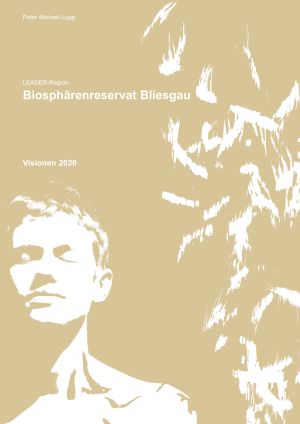
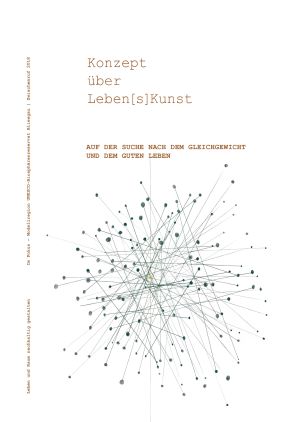
UNESCO biosphere reserves
In search of the balance between man, culture and nature
The ethical and cultural principles according to which we want to create a sustainable living space essentially outline the research mandate that UNESCO has given the global biosphere reserves for regional research work. These questions of survival are alive among us and concern each and every one of us today! In essence, it is about bringing ecology, sustainable forms of business, cultural education for sustainable development and applied ethics - in the sense of the elemental force of a spiritual mindset - into a stabilizing and synergetic context.
People learn from birth from role models. UNESCO therefore designates habitats with special resources worldwide in order to test sustainable ways of life for people and nature in an exemplary manner. Basic ideas on this were already woven into the visions of Agenda 2021 [1992 at the UN Conference on Environment and Development in Rio de Janeiro]. These visions were continued with the 2030 Agenda [September 25, 2015 at a United Nations summit in New York] in conjunction with the Paris Climate Agreement [December 2015]. 193 member states adopted 17 global goals for sustainable development, the so-called Sustainable Development Goals (SDGs).
"The 2030 Agenda stands for a new global understanding of prosperity that goes beyond the narrow view of per capita income. It is about transforming economies towards sustainable development, for example through responsible consumption and production patterns and clean and affordable energy. It is becoming clear that climate policy, sustainable development and poverty reduction are inextricably linked..."
"Path art"
It is an attempt to take into account the different national circumstances, opportunities and levels of development and to open up options for action that should apply equally to all countries. The essence of these goals is to become effective in an exemplary manner in selected areas at the regional level. The recognition as a biosphere reserve is therefore closely linked to a citizen-oriented research mission on how a balance for man, culture and nature, which is necessary for survival, can be permanently achieved. The goal of the UNESCO biosphere reserves is to set this vision in motion, to balance it and to interconnect it with inspiring and everyday examples in interaction with the respective special features of selected habitats on this planet.
The key to this is knowledge exchange as well as creative lateral and further thinking on how sustainable and thus ethically viable, future-oriented forms of life or business can be generated using the example of the specific topics of the Bliesgau Biosphere Reserve. The hope is to move from experimentation and increased knowledge to action. This is supported by the search for the reason for existence, the joy of pausing and wanting to find answers to ethical and philosophical questions. It is extremely exciting and inspiring to unreservedly trace and in this way get to know Socrates, Pythagoras, Plato, Confucius, Rudolf Steiner, and Gottlieb Duttweiler, who accompanied us in this "art of the way". These masterminds emphasize that we are on earth to ensure our further development and to view life as an initiation process. It is important to recognize this guiding vision as a law of the "world soul" and to integrate it into our daily lives if at all possible. Everyone is jointly responsible for the whole and everyone must start with himself!
What is a biosphere reserve?
The term biosphere (Greek, βίος, bíos 'life' and σφαίρα, sphaira 'sphere') refers to the space with life on a celestial body (source: wikipedia.org). This "life sphere" Earth is a unique space with the most diverse habitats, cultures and peoples of mankind as well as non-human species, which are in a multiple synergetic relationship. BIOSPHERES (habitats) RESERVATE means protecting and preserving the abundance and life-giving qualities of our earth - creation - in the present and for future generations, as well as ensuring the necessary ethical basis within the cultures and peoples of this planet through education about cultural and sustainable development.
In 1970, UNESCO ("United Nations Educational, Scientific and Cultural Organization") established the biosphere reserves. They are an essential part of the "Man and Biosphere" program with the aim of developing and testing a compatible and sustainable coexistence between man and nature through exemplary measures. By June 2024, 748 biosphere reserves had been created in 134 countries around the world. The biosphere reserves protect and preserve the natural habitats of humans and nature. The global objective is the renewal of the global community, which establishes an ethical basis in place of the unquestioning domination of nature by humans and ensures an ecologically and ethically sustainable coexistence between humans and nature.
Biosphere reserves - regions with specific characteristics and resources - have been selected worldwide in which sustainable living and economic activity are tested and researched under real conditions. BIOSPHERE RESERVES are therefore regarded as "idea laboratories" for sustainable development, which disseminate their findings regionally and nationally in an exemplary manner.
The special features of the Bliesgau UNESCO Biosphere Reserve
In 2009, the Bliesgau biosphere reserve became the 15th region in Germany to be included in this worldwide network of biosphere reserves by UNESCO. The Bliesgau region covers an area of 36,152 hectares in south-eastern Saarland. German and French cultures meet here at one of the crossroads of Europe. This living space, directly on the border with France (Lorraine), is now part of the greater Saarland-Lorraine-Luxembourg region (Saar-Lor-Lux). The special features of this old cultural landscape include its relatively urban character, a population density above the national average and the coexistence of urban and rural living spaces. Characteristic is the diversity of the landscape with the interlocking of various large and small habitats.
Almost half of the orchid species found in Germany can be admired on the shell limestone soils of the Bliesgau. The traditional, extensive agriculture can still be clearly seen here today in the small parcels of fields and meadows, some of which are bordered by hedges. The landscape in the south is characterized by limestone semi-arid grasslands, extensive, lean lowland meadows and beech forests on shell limestone in floodplain landscapes, e.g. in those of the Blies. Towards the north, there is a striking change to red sandstone with urban structures and extensive beech forests. The orchards, some of which are still in exemplary use, are also particularly species-rich and valuable. Among the animal species that feel at home in the Bliesgau again after efforts to reintroduce them are storks and beavers.
CONSCIOUSNESS - The ethical/ecological dimension
In interaction with the global problems, the specific characteristics described offer an opportunity for strategic, local research and exemplary, sustainable further development of the Bliesgau biosphere reserve habitat. However, before people (or companies, etc.) can develop not only knowledge but also more conscious living habits or corporate strategies, it is necessary to reflect on one's own behavior in everyday life in order to develop and establish new, sustainable options for action in the action radii at the most diverse levels. Awareness of these connections, knowledge, understanding and inspiration, which ultimately leads to appropriate action, takes place on two closely related levels:
"What child of the spirit am I or are we?"
Given that standards are disappearing, conscious awareness of individual, personal, ethical convictions and how they are applied in the context of our own lives or in relation to society and the preservation of our living environment is of central importance. In the exploration and clarification of the dimension of meaning as the basis of applied ethics in everyday life lies the real opportunity for humanity and the power to initiate the transformation necessary for survival. In this context, understanding spiritual experiences and insights as trailblazers that ultimately make the fullness of creation and the meaning of the human mission in life more comprehensible therefore forms the essential basis on the trail of sustainable forms of life. An approach to this experience goes hand in hand with the search for one's own inwardness and usually requires learning to pause, to immerse oneself and to gradually deepen the language of compassion and knowledge. However, this contemplative approach does not mean withdrawing from the world, quite the opposite. Access to a spiritual world is always also a path to center and freedom. The approach to this basic substance of the "art of the path" - against all fears of contact within the current social zeitgeist - provides the breeding ground for the development of a [non-denominational] spirituality within our society. This overarching research mission forms the most important field of action [cf. 1st "commandment" ethics]
Ideas labs for sustainable and mental/spiritual development
The knowledge of one's personal resource consumption, the so-called "ecological footprint", which can be represented or visualized in concrete terms, inspires a great deal of reflection and new thinking. The website www.fussabdruck.de, for example, offers a self-test. [It would be important to install such a self-test for private and public institutions and companies on the website of the Bliesgau Biosphere Reserve and the associated towns and municipalities or all cooperation partners].
The strategy
The concrete application of the "Mobile - UNESCO Bliesgau Biosphere Reserve" finding tool can be used in the context of seminars [Ideas Labs for Sustainable Development] at the various interfaces in the Bliesgau Biosphere Reserve. People with their everyday tasks and projects are invited to unleash their creative powers in order to develop joint solutions using a creative methodology, to harmonize both humanity and living space and thus to bring them into a moving balance. Target groups are local authorities, companies, educational institutions, associations, cultural institutions, private individuals, etc. Results from the laboratory work at these interfaces can be fed into regional development strategies and communicated and exchanged within the network of biosphere reserves worldwide. This creative discussion and interaction of specific regional topics offers the opportunity to responsibly help shape the future of our planet through impulses from our microcosm and to set an example for other model regions.
Ten topics are the focus of ideas labs in the UNESCO Bliesgau Biosphere Reserve
As an example, ten topics or fields of action can be derived from the special features of the Bliesgau Biosphere Reserve. All of them are of great importance in a specific way for a sustainable development and thus for the preservation of the balance in our habitat which is necessary for survival.
The topics of ethics and culture (1+2) form the elementary basis for further research work in the remaining eight fields of action. In a creative examination of these "Ten Commandments", new impulses can be gained in Ideas Labs that enable almost every public, entrepreneurial or private initiative in the Bliesgau biosphere reserve to make the mission of the UNESCO biosphere reserves comprehensible and understandable on a broad level and, above all, to bring it to life in everyday life. A broad impact is achieved through the continuous generation of new idea labs on a wide variety of topics and projects, which are supervised by professional moderators and accompanied by targeted public relations work and then presented to the public as "research results".
The art of keeping your balance while moving
Symbol and methodology within the idea labs
Human existence is, by and large, a subsystem of the Earth biosphere. Being human means a healthy balance between body and mind in harmony with our nurturing habitat, which must be preserved and in which it is possible for man to develop. It is about the union of the determinants of human life imposed by nature: striving and respecting. However, this can only succeed if, as in nature, the forces move in a fruitful and synergetic coexistence and balance each other again and again.
A wonderful image presents itself for this system: a mobile that "dances its game" with the wind in motion and translates the preservation of our living space into a moving and renewing togetherness based on ten essential themes of the present. Measure + center find each other playfully. The "Bliesgau Mobile Biosphere Reserve" therefore symbolizes the vision of people keeping their life plans, ideas and projects in motion and balancing them in a creative interplay for the ethical and ecological stabilization of their living and development space. The topics and resulting fields of action then naturally change with the different forms and needs of the various cultural landscapes on this planet and form the reservoir of thought [think tank] in the search to balance economic concerns with social and ecological interests.
Likewise, this symbol symbolizes the methodology of a creative finding instrument, with which ideas, concepts, model projects or initiatives can be generated in the Ideas Laboratories in interaction with the special features, resources and specifics of the Bliesgau Biosphere Reserve.
The "Ten Commandments"
The "research assignment" in the Ideas Labs is to develop individual ideas, concepts, projects or initiatives based on a specific example that lead to an exemplary, more sustainable way of doing business or living. In the "Ideas Lab", ten current key topics or fields of action of the Bliesgau biosphere reserve are examined in order to derive references to the respective ideas, concepts, projects or initiatives with a spirit of research, imagination and sensitivity. Involuntarily, connections become clear as to what a good life can look like for everyone, but above all for those responsible. Since ancient times, the "good life" has been the highest good for the individual and for society. In this context, it becomes a meaningful, inspiring driving force in everyday life. What applies to the survival of the earth's systems applies equally to the soul and spirit of each and every one of us. Only a moving feeling between the polarities allows us to be balanced and coherent and to act accordingly. Only moving thinking leads to truly new insights. Overarching and connecting fields of action and topics form
I. Applied ethics
We are deeply connected to our living space and stand for a value-oriented and ethically shaped way of life. Spirituality as a spiritual attitude and life practice provides the key to this, creates an access to the spiritual world and forms the basis for responsible action.
This is where the real "treasure" of a new guiding culture within our society lies. Personal responsibility in the sense of charity for people towards each other, towards nature and towards creation as a whole requires us to actively train and constantly sharpen our own "soul ground" and provides the greatest source of human satisfaction, or rather "infatisfaction". The time has become overripe for gathering people between the polarities in that middle ground that enables them to recognize their destiny and take on co-responsibility, even beyond their own life horizon. To do this, people need access to the religious primal experience, transcendence and spirituality across all denominations. Inspiration, consolation, a sense of community, ritual and prayer are essential features of our great Western tradition that are being lost due to the focus on science and efficiency. The recovery of a stabilizing ethic is about man's path to his roots, to the fulfilment of his destiny. Only those who embark on this inner path can sense what remains hidden from normal, socially controlled life.
Only a serious and penetrating examination of this topic can give people the deep inner attitude and conviction that automatically brings with it a sustainable way of life as a "meta-attitude". As people develop and become aware of a spiritual attitude, they also develop a desire to take responsibility for creation and a willingness to help shape living spaces in a sustainable way. The time has come to make an ethical disposition geared towards this the starting point and center of meaning of the inner path of regional and global development. In this context, the "ethical imperative" in interaction with culture forms an elementary field of research, the results of which will subsequently become relevant within all topics!
Your idea/concept/project or initiative...
- 🡪... examines all fields of activity for ethical aspects and impulses that enrich your project.
- 🡪... uses the possibility of meditative practice to get to the bottom of the questions.
- 🡪... is based on a guiding principle that you define in advance from an ethical perspective and which is further refined during the process and provides you and others with orientation.
- 🡪... also consciously seeks a form of expression of the spiritual dimension (rituals, prayer, meditation, philosophy, walks, contemplation of images, readings...) that is in harmony with your inner self and connects you with the spiritual world. Spiritual teachers of your choice can also be consulted. (In meditation, an inner state begins to live in the soul in which opposites gradually dissolve).
- 🡪... promotes the mindful and respectful treatment of people and nature as well as regional resources and is given fundamental consideration in all areas of activity.
- 🡪... is looking for ways to return a "value service" to society as a contribution to a social economy.
Hans Küng
II Culture and art
We promote inner cohesion and cultural identity and use creative lateral thinking and artistic interventions as impulses for change.
Culture - the shared experiences, orientations and convictions - forms the cohesion in a society and is based on the ethical dimension. It provides meaning and is nourished by discourse with the creative. It provides the public with the opportunity to see questions of meaning not only from a rational or academic perspective, but also from the perspective of being human as a creative, sociocultural togetherness. Visual arts, music, drama, literature, philosophy inspire this most effective "agency of meaning-making"! They make a significant contribution to ignite an ecological communication and to provide the corresponding "images of thought" for this!
Commandments I and II are overarching. They form the basic prerequisites or building blocks for the other commandments and have an impact on all fields of action.
Your idea/concept/project or initiative...
- 🡪... refers to the cultural identity of this region.
- 🡪... involves contributions, e.g. from art, poetics, literature or philosophy, to the design of the process or its realization.
- 🡪... contributes to cultural education and the internal cohesion of society.
- 🡪... integrates experienced process facilitators from artistic disciplines and uses the language of art to create mental images of sustainable ways of life.
freely adapted from Wolfgang Rihm, FAZ, 1998
III Biodiversity
We preserve nature and landscape and their biodiversity for their intrinsic value and as the basis for human life and health in the long term.
Your idea/concept/project or initiative...
- 🡪... is fundamentally characterized by a mindful approach to existing ecosystems.
- 🡪... promotes the preservation of existing cultural landscape ecosystems.
Short definition general
According to the Convention on Biological Diversity (CBD), biodiversity or biological diversity refers to the diversity of species on earth, genetic diversity and the diversity of ecosystems. Biodiversity is a basis of life for human well-being, which is why its conservation is of particular interest. A distinction is made between four areas of biodiversity: 1. genetic diversity - on the one hand the genetic diversity of all genes within a species (= genetic variation), and on the other hand the entire genetic diversity of a biocoenosis or an ecosystem. 2. species diversity - the variety of species in an ecosystem. 3. ecosystem diversity - the diversity of habitats and ecosystems. 4. functional biodiversity - the diversity of realized ecological functions and processes in the ecosystem (e.g. material degradation capacities). Worldwide, almost 2/3 of all ecosystems and numerous animal and plant species are classified as endangered. In Germany, and therefore also in Saarland, 70 percent of habitats are threatened.
Definition specific to the Bliesgau biosphere reserve
The Bliesgau biosphere reserve owes its current appearance to the extensive agricultural use of the last few centuries. A special feature is the diversity of the landscape with the coexistence and interlocking of a wide variety of large and small habitats. The biotope types that are valuable from a nature conservation perspective, such as the orchid meadows, the calcareous grasslands, the sage-smooth oat meadows or the many orchards, are open landscape types that have a very high level of biodiversity in our latitudes. The withdrawal of agriculture from low-yield sites on the one hand and the intensification of cultivation on the other are leading to the loss of characteristic landscape elements. An unprecedented abundance of plants and animals are endangered as a result. On three percent of the area, nature can develop without human influence (= core zone).
Vision
In the biosphere reserve, conditions are created that allow natural biodiversity to flourish despite human use. In the Bliesgau biosphere reserve, diversity is preserved in all four areas of biodiversity. Species and biocoenoses whose distribution is concentrated in Central Europe and for which we therefore have a European or even global responsibility are given the highest priority. A suitable action plan is in place. The existing diversity counteracts monocultures. The diverse biocoenoses are more stable and better protected against negative environmental influences. The region is characterized by consumers who ensure the preservation and contemporary development of the diverse cultural landscape with its ecosystems through the demand for regional products.
IV. Sustainable management
We manage with nature and not against it.
Your idea/concept/project or initiative...
- 🡪... is also guided by the principles of ecology [so-called ecological economics] and does business with nature and not against it.
- 🡪... is based on the criteria of the "Economy for the Common Good", which emphasizes the participation of the economy in the common good. This also includes ecological sustainability.
Short definition general
Companies use resources responsibly and weigh up economic, ecological and social goals and interests against each other. In addition to assets and access to raw materials, employees in particular are also regarded as corporate resources. The pursuit of ecological goals not only ensures sustainable access to raw materials, but also gains market advantages through an improved image. A new model in economics is called ecological economics. According to this model, human economic activity is a subdivision of a common biospheric household. In contrast to classical economics, ecological economics is not only about economic growth, the unbridled competition of all against all, but about doing business with nature and not against it.
Definition specific to the Bliesgau biosphere reserve
The Bliesgau biosphere reserve is economically characterized in the northern, urbanized area by trade, commerce and industry, and in the southern area by a rural economy with agricultural, forestry and craft businesses and services. Sustainable economic activity in the Bliesgau biosphere reserve means the establishment of regional value chains, the development of innovative/environmentally friendly products, the development of nature-friendly tourism and the promotion of entrepreneurship and the introduction of environmental management systems.
Vision
A change in values and systems in consumer and business households towards a quality-oriented, sustainable economy and way of life is gaining ground. The biosphere reserve is characterized by regional value chains. Local products are a permanent feature of supermarkets and village stores in the region and in the neighboring conurbations. New jobs are being created in the skilled trades, retail and household-related services. Agricultural and forestry businesses are actively involved in regional marketing, thus securing their existence in the face of declining agricultural subsidies. Craft businesses predominantly use materials of regional origin in their processing. Companies have introduced environmental management systems across the board and are living up to their social and ecological responsibilities. Companies make consumers aware of their region and its raw materials and products. Regional business networks implement their own innovative projects. The general classical model of economics, according to which the market and nature are not interrelated, is gradually being overturned and replaced by the principles of ecological economics. The commitment of the companies within the "Partner companies in the Bliesgau biosphere reserve" network has become a matter of course and is rewarded by customers.
V. Urban-rural relationship
We use and create synergies between our urban and our rural part of the region.
Your idea/concept/project or initiative...
- 🡪... promotes exchange between urban and rural areas in the region.
- 🡪... links city and countryside conceptually.
- 🡪... focuses on the respective strengths of urban and rural areas.
Short definition general
The special urban-rural relationship is characterized, among other things, by a division of labour (non-agricultural activities) in the development of society. The city also functions as a marketplace for the products produced in the surrounding area, as a workplace and as a location for public, medical and cultural services, e.g. education, further education and secondary schools as well as museums, etc. The surrounding area supplies itself with products produced in the city and provides recreational space for the city.
Definition specific to the Bliesgau biosphere reserve
The urban-rural relationship in the Bliesgau biosphere reserve is based on an originally agricultural socialization, which has undergone an interaction with the beginning of industrialization and the associated concentration of industrial sites, especially in urban areas. Today, this urban-rural relationship is characterized by a portal situation between towns on the periphery of the Bliesgau biosphere reserve, such as Saarbrücken, Saargemünd, Homburg and Zweibrücken. Within the region, there is interaction with St. Ingbert and Blieskastel. The cities offer the region their potential as a market, school, educational, cultural and health location, as well as their profile as a research and business location. The rural areas also serve as living and working spaces, as places to relax and slow down, as well as for the production of sustainable, high-quality food and artisan products.
Vision
The urban and rural areas of the region are self-confident and work together synergistically by focusing on their respective strengths. Rural and urban areas are equally valued as places to live. Both locations are gaining in profile and developing through a fruitful exchange across borders.
freely adapted from Wolfgang Rihm, FAZ, 1998
VI Demographic change
We are developing life models for the future in the present.
Your idea/concept/project or initiative...
- 🡪... takes into account the already existing effects of the demographic change and/or even picks up on them synergistically.
- 🡪... is a suitable model for counteracting demographic change.
Short definition general
Demographic change describes the excess of the death rate over the birth rate since the middle of the 20th century. The so-called industrialized countries are losing population and "ageing".
Definition specific to the Bliesgau biosphere reserve
Demographic change is having an impact above all in the area of working environments. Here, the remaining potential is concentrated primarily on younger, full-time employees. The statutory retirement age is being raised, women are working more and younger, well-qualified and "independent" employees are taking jobs outside the Saarland. As the majority of the Bliesgau biosphere reserve has been characterized by main and part-time farming for centuries, we are mainly dealing with changes in the technical infrastructure in the areas of schools, kindergartens, health, care for the elderly and local transport. Some private and public buildings are already vacant. Immigration and a slight increase in the number of births are not compensating for the declines, the rural population is "ageing", which means that it will no longer be possible to provide for it with conventional infrastructure in the future, and the social structures in the countryside and in the city are also undergoing serious changes. The Bliesgau biosphere reserve is called upon to develop and test suitable models for coping with this central social process.
Vision
Supported by far-sighted and careful planning, a concentration of settlement development has been initiated. The Bliesgau biosphere reserve has a modern society with life models that offer space and time for grandparents, parents and children. Intergenerational family models are "in" again. The population is inspired by a harmonious environment, draws on the potential of its traditions and has a high level of social competence. More and more people of different nationalities and cultural backgrounds have found a new home and place of work here. There is a great willingness to integrate, and together we have set ourselves the goal of overcoming the challenges of the future. The motto is: "Be worth something, learn from each other, enjoy working and spend quality time together". In concrete terms, most villages have integration and intergenerational meetings that ensure intensive intercultural/intergenerational exchange and mutual help. Regional mobility is organized in a flexible, target group-oriented, resource-saving and entrepreneurial way.
VII Climate protection and energy
We think globally - we act regionally. Innovative environmental models provide viable knowledge building blocks for climate protection.
Your idea/concept/project or initiative
- 🡪... promotes the use of renewable energies.
- 🡪... operates with maximum energy efficiency.
Short definition general
The consumption of fossil fuels in the industrialized world is increasing the concentration of carbon dioxide in the atmosphere. The resulting greenhouse effect leads to global warming and thus to climate change worldwide. Climate change is therefore directly linked to energy consumption. The use of renewable forms of energy (e.g. solar, wind, water or biomass energy) and improved energy efficiency as well as energy saving reduce or replace the use of fossil fuels and thus contribute to climate protection. According to the "Green New Deal", emissions should be reduced by 40 percent by 2020.
Definition specific to the Bliesgau biosphere reserve
As a model region for sustainable development, the Bliesgau biosphere reserve must set an example with model and innovative solutions, especially in the face of such a global problem. On the one hand, the aim is to raise awareness of the issue. On the other hand, technical and organizational models for the climate-friendly use of energy resources must be developed that take into account the specifics and characteristics of our cultural landscape. Among other things, the landscape compatibility of energy generation plants is important (problems with energy crops such as maize/rape, wind farms, hydropower, etc.).
Vision
The Bliesgau biosphere reserve is the driving force behind a new climate policy at regional level. It is a laboratory for testing innovative climate protection projects, has a forward-looking climate protection concept and has already implemented large parts of it. Municipalities, science, business and citizens in the region cooperate and coordinate with each other in the provision of energy. In particular, the existing biomass potential in the region is being optimally utilized. Parallel to the promotion of renewable energies, efforts are being made to optimize energy efficiency in municipalities, private households, industry and commerce. With regard to the energy-efficient refurbishment of buildings, cooperation with experts in the field of monument preservation should be sought in the case of historic buildings.
VIII. Cross-border cooperation
We gain identity and inspiration in the interaction with our neighbors at a crossroads of Europe.
Your idea/concept/project or initiative...
- 🡪... promotes cross-border thinking and business.
- 🡪... promotes the valorization of the varied history of the region.
Short definition general
A border (loanword, derived from the Slavic word granica, which has the same meaning) is the edge of a space and therefore a dividing value, a dividing line or area. Borders can delimit geometric or geographical spaces. These include political or administrative borders, economic borders, customs borders or property borders. Spaces can also have blurred boundaries, such as landscapes, cultural boundaries or distribution areas, which can hardly be defined by linear structures in nature.
Definition specific to the Bliesgau biosphere reserve
The history of the Saarland, with all its vicissitudes, has created a unique cultural landscape worthy of protection, which often only reveals its special charm at second glance and reflects a seam of European culture in the Bliesgau biosphere reserve. The core of European coexistence was defined here many centuries ago. European reconciliation was rediscovered again and again and had to be lived anew. As a living and economic space, the cultural landscape is a central location factor for the towns and municipalities in the biosphere reserve and the neighboring French municipalities. There is a lack of coordinated, innovative (tourism) development of often hidden potential. Given this initial situation, special sustainable measures are needed to safeguard and shape the future of public spaces, which have a direct impact on cultural diversity and thus on the quality of life in the border region.
Vision
The Bliesgau biosphere reserve is characterized by a tourism concept that has made the unique selling points of the border situation marketable. On the one hand, cross-border activities such as joint regional marketing initiatives, joint cultural events or bilingual training opportunities are utilized. On the other hand, the cultural and mental differences are confidently lived and made tangible for the outside world.
IX. Cultural landscape
We create sustainable living spaces that respect our cultural and natural heritage.
Your idea/concept/project or initiative...
- 🡪... contributes to the preservation of the cultural landscape through its economic valorization.
Short definition general
Human use turns a natural landscape into a cultural landscape. At any given time, man has shaped nature according to his needs and his technical and creative possibilities.
Definition specific to the Bliesgau biosphere reserve
Over the centuries, the specific, extensive land use of the people in the region has also created a distinctive cultural treasure trove of many elements. They still characterize the face of this cultural landscape today. These include, for example, areas of limestone semi-dry grassland, extensive lean lowland meadows, floodplain landscapes in the valleys of the Blies and Upper Saar, orchards, beech forests and a building culture characterized by shell limestone and red sandstone. The traditional cultural landscape was mostly used in a polycultural way by agriculture (especially as a sideline) and forestry as well as crafts, on the other hand by the industrial branches of the lime industry, Saar shipping and the iron and glass industry. These structures have been preserved. The opposite pole is formed by the development of modern corporate structures, including in research.
Vision
The Bliesgau biosphere reserve is on its way to becoming a contemporary cultural landscape that is also a home. The cultural landscape is characterized by its own unmistakable profile, which builds on the traditions and the natural and cultural heritage. The region is characterized by a new, transparent corporate culture and an efficient and ecological interaction between agriculture and industry. The areas created through agricultural use will continue to be preserved and developed as an open cultural landscape in the future in accordance with the guiding principle of "preservation through use". The motto is: using the cultural landscape, strengthening regional identity, earning money with biosphere themes, living with pleasure: right here. Architectural and design framework conditions that provoke a break from habits stimulate aesthetic and ecological exemplarity.
X. Education for sustainable development
We are learning to shape our future sustainably.
Your idea/concept/project or initiative...
- 🡪... promotes the ability to reflect on what has been learned and to implement sustainable thinking and action in everyday life.
Short definition general
J. W. Goethe
Education for Sustainable Development (ESD) provides everyone with the skills they need to actively and responsibly shape a sustainable future. In this context, rational, emotional and action-related skills play a decisive role in acquiring the ability to make judgments. The so-called triangle of sustainability requires ecological balance, economic security and social justice.
Definition specific to the Bliesgau biosphere reserve
For the Bliesgau Biosphere Reserve, ESD means linking regionally specific educational programs in all conceivable direct and indirect educational initiatives with the goals of sustainable development. The educational program uses knowledge from interdisciplinary research projects in the Bliesgau biosphere reserve. ESD is aimed in particular at the ability to absorb shocks of all kinds and to mobilize resilience in order not only to survive periods of hardship, but also to actively overcome them, while preserving and strengthening courage, joie de vivre and friendliness (resilience). ESD specifically includes the promotion of school education, pre-school education, public awareness, vocational education and training and tourism. The educational offer is characterized by a high degree of practical relevance. The focus is on the topics of nature/culture and cultural landscape, sustainable consumption styles, homeland, climate protection, resource conservation, urban-rural and demographic development. The main aim is to raise awareness of sustainability issues and motivate people to take responsibility for their own actions in their immediate environment.
Vision
The Bliesgau biosphere reserve is an educational region. The day-care centers, schools and adult education in the region work successfully with ESD programs and show demonstrable educational successes. There is a transfer of knowledge between these model schools, the Ministry of Culture and the Ministry of the Environment. Tourism focuses on educational offers with an ESD claim and binds many guests to the region with a high return rate. The offers are integrated into a clear ESD edutainment concept and are attractive for all age groups. Sustainability under the motto: "slower, better, more beautiful" can be felt and experienced because the people who live here shape their lives and the future responsibly and actively.
IdeasLab - Methodology
The research assignment in the IdeasLab "Mobile Biosphere Reserve Bliesgau" follows a methodology whose application is decisive for finding results that can really transform! The ten fields of action presented are the elementary raw materials for the research assignment and experiments in the IdeasLabs are the ten fields of action presented. People are invited to get to know the topics better in order to develop a "Mobile Biosphere Reserve Bliesgau" for their own company, project or living environment as a model for sustainable ways of living or doing business.
The methodology consists of initially engaging with the ethical and cultural imperatives without resentment and exploring this topic in depth. Only when a willingness for inner growth and change can be felt in this empathetic and sensitive process, and this can be formulated in a guiding principle, does the process continue. This guiding principle is then used to illuminate each individual further commandment or field of action. With a lot of creativity and humor, the aim of all "commandments" is to find a very specific reference to the individual project, plan or undertaking [also in private life]. Naturally, there will always be focal points. However, it is essential that all "commandments" are highlighted, even if at first glance there is no direct connection to the project! Every association and idea counts. This requires a serious examination of the content of the respective field of action through a spirit of research and experimentation!
Comparable to an orchestra, it is not just about the individual instrument alone, but about the interplay! The orchestra is conducted by ethics and culture. The "concert" is formed in the new ideas and initiatives for the individual fields of action. The symbol of the mobile is brought to life with concrete content and ideas, it starts to move and dance. Gradually, it becomes clear what unexpected synergy can be triggered by seeing and interacting with the individual topics! The almost invisible thread that holds them together is the connecting line that can be fed into the world network via your own living space and resonates with them.
In this poetic way, even the layperson can experience that topics and fields of action are interrelated, just as they are in nature, and achieve a much greater degree of effectiveness together, even if individual fields of action naturally form focal points. This is both a process and a laboratory. This research assignment is suitable for a wide variety of target groups and requires perseverance and professional moderation in the idea labs at the beginning of the process.
The underlying methodology has already proven itself in many research projects. The individual development of a Mobile Biosphere Reserve Bliesgau will therefore certainly lead to a wide variety of new insights and perspectives!
Experiment + best practice: 20 model examples
In order to implement the development strategy, 20 idea labs, in each of which a specific mobile UNESCO Biosphere Reserve Bliesgau is created, could be realized from the most diverse areas or milieus according to the methodology presented at the start. This process will be implemented within a year and accompanied and documented with the support of experienced moderators. The results will be presented to the public and discussed.
Involved are 4 municipalities, 3 companies, 4 schools, 1 kindergarten, 1 hospital, 3 cultural institutions, 4 private households [variable] .
Conclusion
Transformation arises in reality and through the courage to engage with the unfamiliar beyond comfort zones and, above all, in a spiritual dimension as the real driving force and elemental force. Only in this way can it address the zeitgeist of our society and the innermost being of each individual. Through the consistent establishment of the presented IdeaLabs, it gradually becomes comprehensible what the mission of the UNESCO Biosphere Reserve Bliesgau is really about.
This mission is expressed individually and unmistakably in each comprehensible model example. The results are presented for discussion in order to stimulate further thinking. In particular, initiatives that focus on spiritual and artistic approaches (e.g. through meditation, prayer, rituals or the visual and performing arts, music, etc.) can intensively inspire, deepen and disseminate this process!
Gradually, the most diverse "Mobiles" are becoming the driving force behind a new movement for the "good life" in the sense of sustainable and ethically viable ways of life that build bridges within our society and encourage people to set out. Quite incidentally, this campaign creates an unmistakable identification signet. The complex mission of the Bliesgau biosphere reserve "vergemeinschaftet" itself into people's everyday lives. From knowledge + experimentation, new habits of a more conscious action emerge, which is an example and model for others, even if the experiment fails for the time being or doubters still need time.
In the end, all that matters is that we shape life and living space and how we do it, or whether we have a message that contributes to the preservation of this wonderful planet.
Idea/concept/text/photos/illustrated art: Peter Michael Lupp, Head of Cultural Affairs, Regionalverband Saarbrücken
Contact: katja.droeschel@rvsbr.de, 0681 506-6062
Conceptual collaboration/graphics: Elke Birkelbach
© 2024

